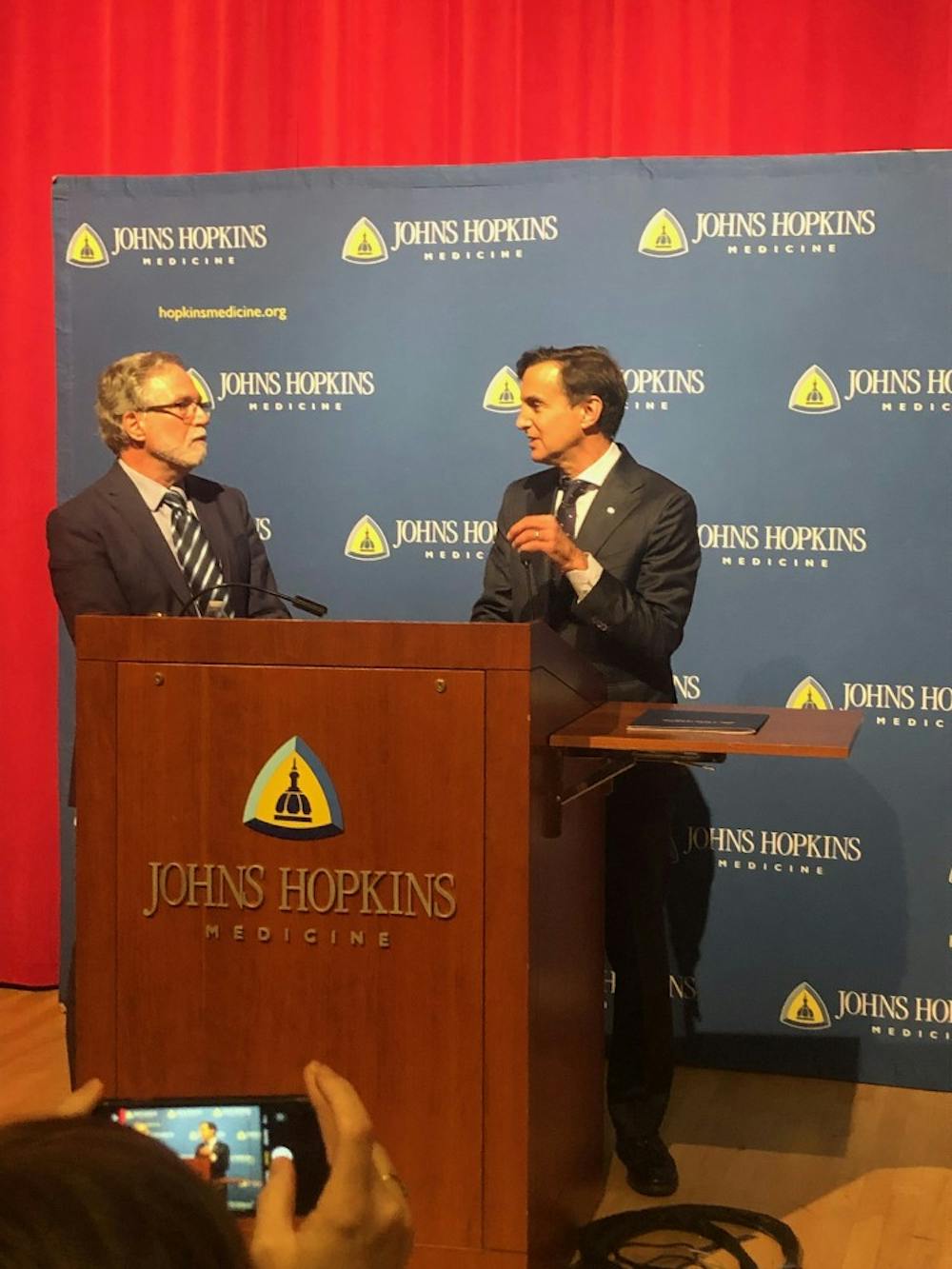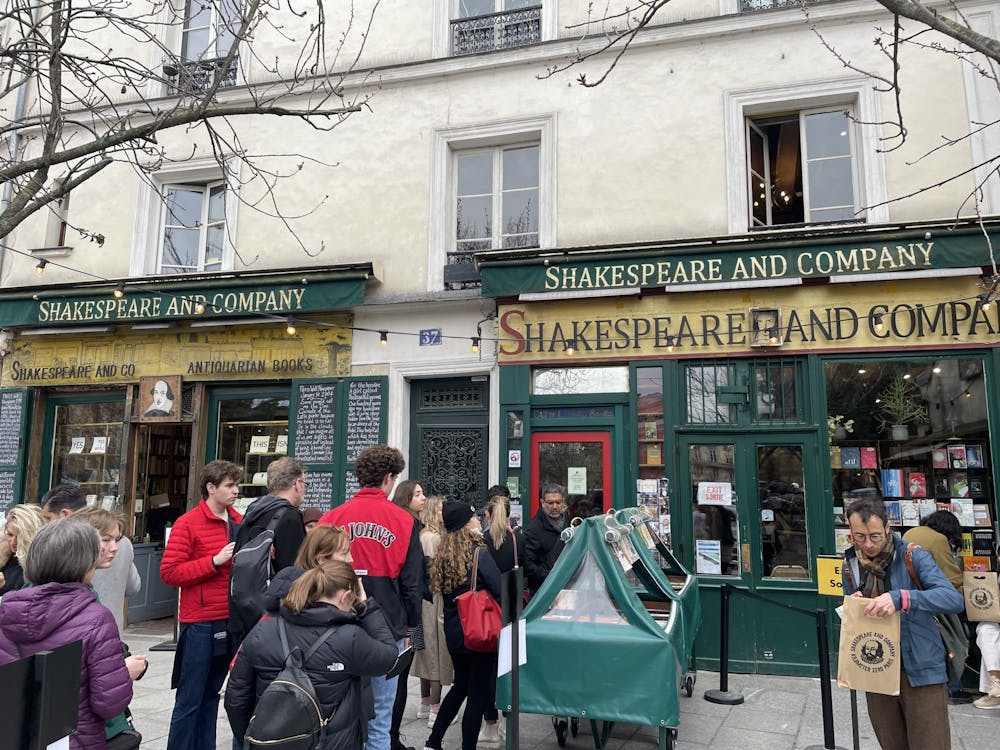Early Monday morning, the Nobel Assembly announced that Dr. Gregg L. Semenza, the C. Michael Armstrong Professor of Pediatrics at Hopkins School of Medicine, was a 2019 recipient of the Nobel Prize in Physiology or Medicine. Semenza received this honor alongside Dr. William G. Kaelin of Harvard and Dr. Peter J. Ratcliffe of Oxford. Kaelin completed his specialist training in Internal Medicine and Oncology at Hopkins.
The award-winning work of Semenza and his colleagues concerns the way cells sense oxygen, and how they function in low oxygen conditions, or hypoxia. Semenza’s work on this subject began when he was a postdoctoral student at Hopkins School of Medicine. His work with transgenic mice inspired him to explore how oxygen affects gene regulation.
When he joined the Hopkins faculty in 1990, Semenza and his team performed research to try to understand how hypoxia triggers production of erythropoietin, a hormone which is generated by the body when oxygen levels are low, and signals an increase in red blood cell production. Semenza’s team identified an enhancer element in cell DNA that causes other genes to be turned on when oxygen levels are low. He hypothesized that a protein binds to this element, and named this protein Hypoxia Inducible Factor 1 (HIF-1).
In 1995, Semenza purified HIF-1 protein and found that it contained two subunits, alpha and beta. In cells, HIF-1 alpha is present in low oxygen conditions but disappears when oxygen concentrations are high.
Dr. Landon King, executive vice dean of the Hopkins School of Medicine, explained in a press conference on Monday afternoon at the Hopkins School of Medicine why this work is important to the scientific community.
“In 1996, Gregg demonstrated that HIF-1 activates a key gene involved in blood vessel formation. This showed that HIF-1 helps the body cope with low oxygen conditions by triggering not only red blood cell production, but new blood vessel growth,” King said.
Semenza explained at the press conference how the discovery of HIF-1 has given researchers a new target for therapy and is a promising avenue for the development of treatments for many human diseases, including cancer, cardiovascular disease and metabolic diseases.
He explained that many tumors grow nutrients by growing extra blood vessels, so being able to turn off HIF-1 may slow cancer progression.
“Cancer cells divide rapidly and consume a lot of oxygen, so they become very hypoxic... Most chemotherapy drugs are designed to kill dividing cells that are well-oxygenated, but there are no treatments that are approved to treat the hypoxic cells within the cancer. We believe it’s these cells that survive the therapy and come back,” Semenza said.
At least one HIF-related compound is currently in clinical trials for kidney cancer. Andrea Thurnheer, a junior majoring in Chemical and Biomolecular Engineering, works in the Gilkes lab at the Sidney Kimmel Cancer Center at Hopkins Medicine, which studies how cancer cells are affected by hypoxia. She explained how Semenza’s work on HIF has led to further research at Hopkins.
“[Semenza’s] work is very important to the field of cancer research, because hypoxia has been shown to increase metastasis and resistance,” Thurnheer said. “His work is funneled down into the projects of our lab.”
At the press conference, University President Ronald J. Daniels made sure that an influential individual in Semenza’s early life was recognized.
“I know we have a lot of people here to thank… I’d like to call out one who might be missed, and that is Rose Nelson,” Daniels said. “She’s not a previous Nobel winner, nor is she related to Hopkins or associated with any institution. Rose, though, was really instrumental in bringing us to this day — she was Gregg’s high school biology teacher. She understood the power, the importance, the allure of basic curiosity driven scientific research.”
Semenza agreed, highlighting the impact that science educators have on young people.
“That’s the importance of teachers, to make that kind of spark, and in this country we need to give more emphasis to teachers and reward them for the hard work that they do, which makes such a difference in the lives of so many,” he said.
Semenza has spent the entirety of his career at Hopkins, where he has mentored countless students and researchers. He explained that he chose to stay here following his postdoctoral position because of the collaborative environment.
“There are places where there are smart people who know how to do lots of things, and there are places where everybody’s very friendly, but there are very few places that have both of those, like Hopkins,” Semenza said.
While receiving the Nobel Prize is considered one of the highest honors in science, Semenza has experienced his share of rejections. When his team submitted their first manuscript on the discovery of HIF-1 to multiple journals, none of them felt the development warranted publication. Their work was then reviewed and published by The Proceedings of the National Academy of Sciences and has since been cited over 5000 times.
Semenza shared some words of wisdom with students who attended the press conference, encouraging them to continue their careers in scientific research.
“The message I have for everybody that’s here training today is that I was once where you are now, and someday you will be where I am now,” he said.
Semenza expressed gratitude to the entire Hopkins community for his accomplishment.
“This is an award shared by everybody at Johns Hopkins, past and present, because I couldn’t have done without you all,” he said.
The Nobel Prize Award Ceremony will take place on Dec. 10, 2019 in Stockholm, Sweden.





